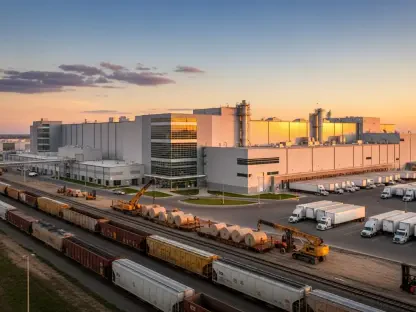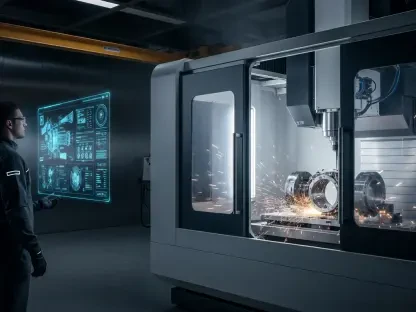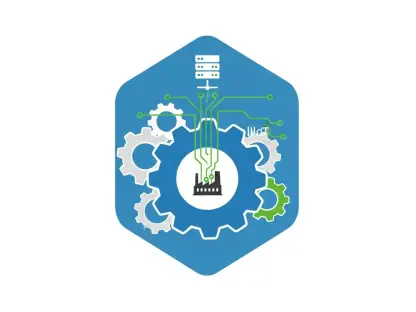I’m thrilled to sit down with Kwame Zaire, a renowned expert in manufacturing with a deep focus on electronics and equipment. With his extensive background in production management and thought leadership in predictive maintenance, quality, and safety, Kwame offers invaluable insights into the challenges and innovations shaping the industry today. In this conversation, we dive into the impact of volatile U.S. tariff policies on manufacturers, exploring how these changes affect costs and operations, the mixed feelings of optimism and concern among industry leaders, and the role of AI in navigating these uncertainties. We also discuss practical strategies for smaller companies and the hurdles of outdated data systems. Join us as we unpack these critical topics with Kwame’s expert perspective.
Can you walk us through how recent U.S. tariff policies are impacting American manufacturers, especially in terms of unexpected costs?
Absolutely, Marie. The rapid shifts in U.S. tariff policies have created a real financial burden for manufacturers. We’re seeing costs skyrocket almost overnight—a shipment budgeted at $60,000 can easily jump to $90,000 or even $100,000 by the time it clears customs due to sudden tariff hikes. These increases often come with little to no warning, so companies are forced to absorb the extra expense or pass it on to customers, which can hurt competitiveness. It’s not just raw materials; it’s also components and equipment that are critical to keeping production lines running. For many, especially in electronics, these cost spikes are eating into already tight profit margins.
How are these sudden tariff changes disrupting day-to-day operations for manufacturers?
The disruptions are significant. When tariffs jump from, say, 10% to over 100% without notice, manufacturers are caught off guard. Production schedules get thrown off because they can’t secure materials on time, or they’re stuck waiting for cash to cover unexpected customs fees. I’ve seen companies halt entire production lines because they couldn’t pay for a critical shipment at the port. Plus, the uncertainty makes planning nearly impossible—how do you commit to contracts or forecast budgets when policies could change tomorrow? It creates a ripple effect across the supply chain, stressing every part of the operation.
There’s a split in the industry where many leaders see potential benefits from tariffs, yet most are worried about disruptions. How do you see this mix of optimism and concern playing out?
It’s a fascinating dynamic. On one hand, 64% of leaders are hopeful that protective tariffs could level the playing field by making domestic manufacturing more competitive against cheaper imports. There’s a belief that it might drive more business back to U.S. soil over time. But the flip side—87% worrying about disruptions—is very real. The unpredictability of policy changes keeps everyone on edge. I think this tension is pushing manufacturers to be more proactive, looking for ways to adapt, but it’s also creating a lot of short-term stress as they navigate the immediate fallout of these volatile policies.
What are some of the specific upsides manufacturers are hoping to gain from these tariffs?
Many manufacturers see tariffs as a chance to boost local production. If imported goods become more expensive due to higher duties, customers might turn to American-made products instead. This could mean more orders for U.S. companies, especially in industries like electronics or heavy equipment where domestic quality is a selling point. There’s also a long-term hope that tariffs will encourage investment in U.S. manufacturing infrastructure, creating jobs and strengthening the industry. It’s a big-picture optimism that’s driving some of the positive sentiment.
What kinds of disruptions are manufacturers most concerned about when it comes to these tariff policies?
The biggest worry is the sudden cost spikes I mentioned earlier, which can derail budgets instantly. There’s also the fear of supply chain breakdowns—many rely on specific international suppliers for critical components, and a tariff surge can make those relationships unsustainable. Another concern is losing contracts; if a manufacturer can’t deliver on time or at the agreed price due to tariff-related delays or costs, clients might go elsewhere. It’s a constant balancing act, and the unpredictability of when or if a tariff will hit just adds to the anxiety.
How are manufacturers trying to manage the unpredictability of these tariff changes in their operations?
Right now, a lot of companies are resorting to stockpiling materials to hedge against future tariff hikes or supply shortages. They’re trying to lock in costs by buying in bulk before prices jump. Others are renegotiating contracts with suppliers to share the burden of potential increases. Some are even looking at domestic suppliers, though that’s not always feasible due to cost or availability. But these are often band-aid solutions—stockpiling, for instance, ties up cash and requires warehouse space, which adds another layer of expense and risk.
How is AI stepping in to help manufacturers tackle the challenges posed by volatile tariffs?
AI is becoming a game-changer for manufacturers dealing with tariffs. It’s all about data and foresight. With predictive cost modeling, AI can simulate different tariff scenarios and help companies plan for potential cost increases before they happen. Real-time supply chain insights allow manufacturers to track disruptions as they unfold and adjust on the fly. And then there’s alternative sourcing—AI can analyze global supplier networks to find cost-effective options that might dodge high tariffs. I’ve seen companies use these tools to pivot quickly, saving thousands by rerouting shipments or switching vendors based on AI-driven recommendations.
For smaller or mid-sized manufacturers, how practical are AI-driven strategies like diversifying supply chains or using foreign trade zones to manage tariff costs?
It’s a mixed bag for smaller players. Diversifying supply chains—sourcing from multiple countries—sounds great, but it’s often tough due to limited resources and networks. They might not have the volume to negotiate with multiple suppliers or the logistics to manage it. Foreign trade zones, where you can hold shipments tariff-free until needed, are a smart tactic to delay costs, but they require infrastructure and know-how that many small firms lack. That said, with the right AI tools tailored to their scale, these strategies can become more accessible by simplifying decision-making and cutting down on manual guesswork.
With so many manufacturers still entering data manually, how big of a barrier is outdated data infrastructure when it comes to adopting AI solutions?
It’s a huge barrier. About 70% of manufacturers are still stuck with manual data entry, which means their information is often incomplete, outdated, or just plain inaccurate. AI thrives on clean, real-time data, so if you’re feeding it garbage, you’re not going to get useful insights. This outdated infrastructure slows down the adoption of AI because companies have to overhaul their systems first. It’s not just a tech issue—it’s a cultural shift, too. Many are hesitant to invest in digital upgrades when they’re already strapped for cash due to tariffs.
What advice do you have for our readers who are looking to navigate these tariff challenges and modernize their operations?
My advice is to start small but think long-term. First, get a handle on your data—digitize what you can and focus on accuracy for things like inventory and landed costs. Even basic automation can make a big difference. Then, explore AI tools that fit your budget and needs; many solutions now cater to smaller manufacturers with scalable options. Don’t just react to tariffs—build flexibility into your supply chain by identifying alternative suppliers, even if you don’t switch right away. And finally, don’t go it alone. Tap into industry networks or consult with experts to learn from others who’ve weathered these storms. A proactive mindset, paired with the right tech, can turn these challenges into opportunities.









